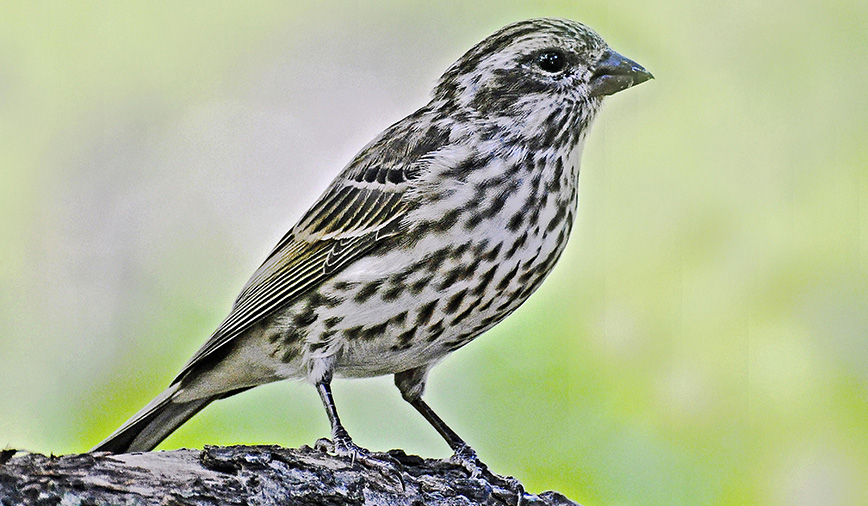Maintaining a birdfeeder is a little bit like having your own restaurant. You choose the menu, you choose the hours. And, if all goes well, it can be the sort of place where—to paraphrase the theme song from the old sitcom Cheers—you know everybody’s name. Northern cardinals, black-capped chickadees and dark-eyed juncos typically top local lists of frequent visitors, followed by house finches and downy and red-bellied woodpeckers.
But, just like the time Tip O’Neill dropped in at the Cheers bar, every once in a while you’ll get a feeder guest that makes you do a double take. Here at the feeders at the Pottawatomie Community Center, we’ve been treated to just such an event this winter with the arrival of the pine siskins.
Pine siskins are infrequent winter visitors in our area, dropping down from the north where their breeding grounds stretch into Canada and Alaska. Pine siskins are members of the finch family and might at first glance be mistaken for American goldfinches in drab winter plumage. In fact, siskins and goldfinches are members of the same genus, Carduelis. Carduelis is derived from the Latin carduus, or thistle—a favorite finch food.
Siskins, like winter goldfinches, leave you with a vague impression of yellow as you watch them move. But two major clues should help you tell the difference. Goldfinches have heavy-looking bills just right for cracking open seeds. Siskins, however, have thin, delicate-looking bills; pointy and needle-like, they’re best suited for tweezing seeds from pine cones or, in summer, plucking small insects off a twig. You wouldn’t think they’d stand a chance against the seeds in our feeders, but they nonetheless get the job done.
The other difference between siskins and goldfinches is in their markings. Goldfinches have no streaks on their feathers, while siskins are heavily streaked on the breast and back.
Pine siskins are irruptive migrants, which basically means their movements are not predictable in the way those of “regular” migrating birds are. Siskins may move in large flocks, or small ones. They may fly great distances, or short ones. And some years, they might not migrate at all. Such movements likely are tied to available food supplies, but studies into irruptive migration are ongoing.
Last year at our park district feeders we regularly saw groups of 30 or more siskins crowded around our feeders. This year, the most we’ve seen at one time is four. Next year, who knows?
In these past few days of bitterly cold temperatures, I’ve seen one siskin in particular at about the same time each day. At least I think it’s the same bird. It arrives around lunch time and, rather than sit outside the feeder and reach in, like the other birds do, this one climbs inside the feeder itself. It almost seems as if the bird has a standing reservation for a table for one. Seated comfortably out of the wind, the feathery little diner then sits and eats its fill, stopping only occasionally to peck and flap and shoo other potential customers away.
At a time when restaurants for humans are struggling, the traffic at birdfeeders is booming. If you have a feeder or two in your yard, keep them well stocked with seeds like nyjer and shelled sunflower pieces. Keep them free of snow and ice. And keep your eyes open for pine siskins.
Pam Otto is the manager of nature programs and interpretive services for the St. Charles Park District. She can be reached at potto@stcparks.org or 630-513-4346.

